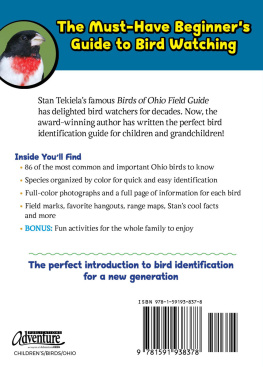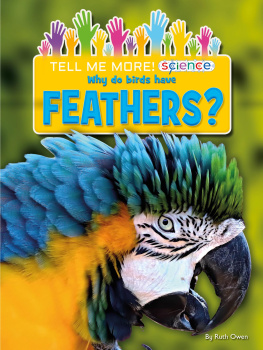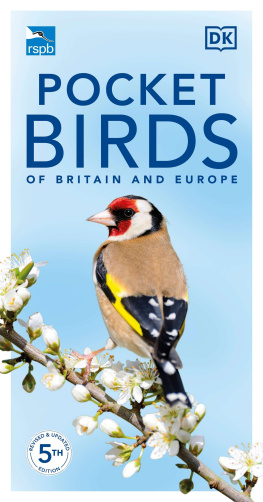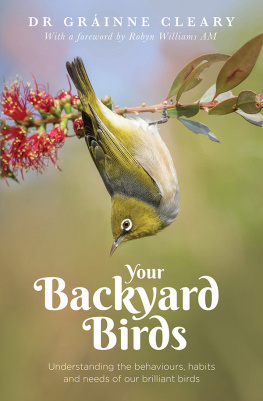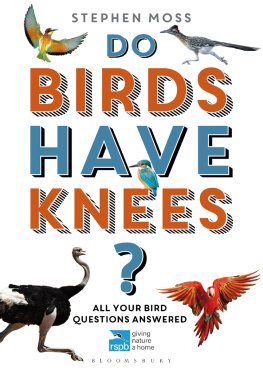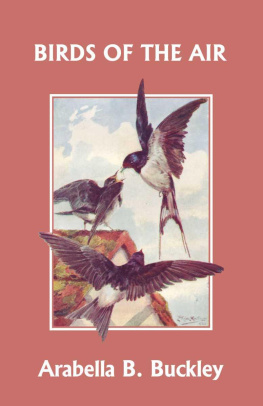
BEAKS, BONES, AND BIRD SONGS

How the Struggle for Survival Has Shaped Birds and Their Behavior
ROGER J. LEDERER
TIMBER PRESS PORTLAND, OREGON
CONTENTS

The Whys and Wherefores of Foraging
How Birds Employ Their Sensory Abilities
The Animals That Conquered the Air
Migration and Navigation in an Endless Sky
Enduring Heat, Cold, Wind, and Rain
How Birds Live Together
What We Do To Birds
Teachers have influenced me throughout my entire life. I have worked with teachers at all levels of education. I have been a teacher. With enormous admiration and respect I dedicate this book to all those who spend their lives in such a noble profession, educating others about the natural world and how we are part of it.
FOREWORD

Im a birder, so Im biased, but I think birds are the most wonderfully diverse, unfailingly fascinating creatures on the planet.
With more than 10,000 species, birds encompass almost every possibility of shape, lifestyle, niche, design, and environment. There are hummingbirds scarcely bigger than bees, and flightless cassowaries that stand as tall as a human, with a kick that can kill a person (though they rarely do). Birds of paradise shimmer with color and cascades of gauzy plumage; nightjars blend so well with the dead leaves of the forest floor that one must almost step on them to see them. For the benefit of his mate, a male Great Argusa pheasant from Southeast Asiafans his immense, specialized wing feathers and long tail to create a mesmerizing half circle of silver, from which hundreds of iridescent golden eye spots seem to glare.
Birds are found from the North Pole to the fringes of Antarctica, from steamy Bornean rainforests to the driest deserts on Earth. Seabirds crisscross the vastness of the worlds oceans effortlessly; some albatrosses, in the half decade or more before they are old enough to breed, may clock 100,000 miles in a single year, wandering the gale-raked seas of the Southern Hemisphere.
Birds eclipse even the highest mountains on the planet, flying overnot aroundthe Himalayas at nearly 30,000 feet. Imagine sitting on the wing of an airplane instead of inside the pressurized cabin, in subzero temperatures, gasping for breath in the low-oxygen atmosphereand now imagine exerting yourself like a sprinter running a four-minute mile. Thats what some cranes do twice a year.
Ive been privileged to study wild birds for many years, exploring the lives and movements of some of the most interesting groups. For two decades, Ive led a study of the migration of the Northern Saw-whet Owl, a tiny raptor that weighs about as much as a robin, and is so infrequently seen that many birders go a lifetime without encountering one. When we started studying these owls in the mountains of Pennsylvania, Saw-whets were thought to be so rare that they were the symbol of the state wildlife conservation fund. But by stretching our whisper-thin nets in the woods at night each autumn, and playing the weird, tooting call of the male Saw-whet, we catch them by the hundredsor more. One remarkable season, we netted almost 4000 of them, traveling south from the boreal forests of Canada.
Another group Ive been working with for years are hummingbirds, which add zip and color to backyards from the Rio Grande to Alaska. Science has peeled back many of the mysteries of these minute dynamostheir extraordinary physiological abilities, their epic migrations, their ferocious metabolismsbut we still have a lot to learn. Ive worked with colleagues across the continent to explore the way that some western hummingbird species, most notably the Rufous Hummingbird of the Pacific Northwest, are rapidly evolving new migratory routes and new wintering areas in the East and Southeast. Each winteryes, winter!we catch and band dozens of vagrant hummingbirds, which happily tolerate temperatures well below freezing in the middle of northeastern winters. One hardy Rufous Hummingbird has been documented surviving nighttime temperatures down to -9F, with windchills below -30F. Thats amazing for any animal, much less one that weighs slightly more than a penny. How do they survive? These hummingbirds have the ability to drastically lower their body temperature at night, essentially going into a nightly hibernation to conserve energy, then emerging from torpor at first light, and resuming their hunt for tree sap, winter-active insects, and other food.
All this is by way of whetting your appetite for what youll find in this book. Educator, birder, and ornithologist Roger Lederer is your guide through the myriad, and often almost miraculous, ways that birds live their varied lives. From avian senses to communication, flight to physiology, migration to sexthe whole range of bird life and natural history is here.
Youll learn how birds react to hurricanes; that goldfinches double the density of their plumage for winter; why their small size makes thieves of Calliope Hummingbirds; and how (in a sense) urban birds understand posted speed limits for automobiles, perhaps better than human drivers.
Ive had the pleasure of birding with Roger on his home ground in the mountains and river valleys of California. Under his entertaining tutelage, youll never look at birds the same way again. And you may see that it is not bias, but a simple fact: birds really are the most fascinating animals on Earth.
Scott Weidensaul, author of Living on the Wind and other books
INTRODUCTION

Its Tough To Be a Bird
There are some four million different kinds of animals and plants in the world.
Four million different solutions to the problems of staying alive.
DAVID ATTENBOROUGH
Look outside your window, take a walk, go fishing, watch a video, or do anything else that allows you to see birds in the wild. You may get the impression that birds are blithely going about their business, happily chirping, singing, and scratching among the leaves, flitting from branch to branch, clambering up a tree trunk, or soaring through the sky barely moving a feather. Looks like an easy life. Cultural symbols like the dove representing peace, the bluebird signifying happiness, and the robin as the harbinger of spring reinforce the idea that birds have not a care in the world. But we dont often see the arduous challenges a bird faces every moment of every day.
Of the many hours I have spent in the field, watching birds flying, feeding, resting, and nesting, I was most affected by those moments when I saw birds searching for food in blowing snow, sitting on the surface of an ocean fighting threatening waves, and flying in serious winds. I wondered: how do birds make it from hatching to adulthood and from year to year after that?
Birds have to be on task all the time. They have to use their senses to find food, migrate, withstand the weather, avoid predators, compete with each other and alien species, and face a myriad of other trials. This book is about the abilities, adaptations, and behaviors birds possess and employ to survive from one day to the next. It is only the most physiologically, anatomically, and behaviorally well-tuned birds who successfully meet these challenges and go on to the most important goal in their life, reproduction.
Next page






